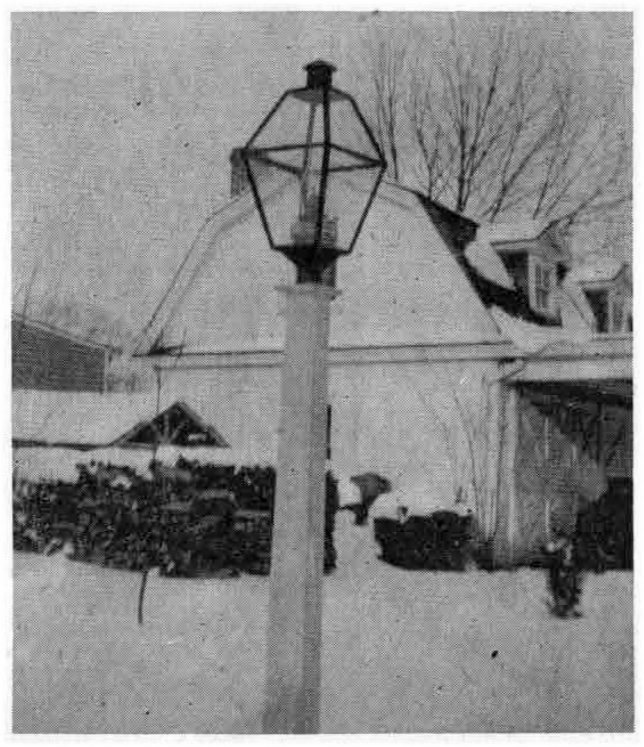The house, described as “the finest surviving example of Victorian mansard mansions erected in the 1870’s by James Henry Askin,” was so briefly described in last week’s column that the writer thought it would be of interest to readers to amplify that description in the current column.
Although torrential rains on Saturday morning undoubtedly lessened the numbers usually attending the annual “open house” tour of the Radnor Historical Society, there were still a goodly group of visitors at each of the six houses opened for the occasion. Perhaps none was more popular than the George H. Borst house on Bloomingdale avenue, not only because of its central location, but also because of the fact that this is the first year in which a house of the strictly Victorian style of architecture has been listed for visiting. It is a style of architecture well known locally since James Henry Askin, the community’s first builder of suburban homes, was responsible for the large number of these houses built on both sides or Bloomingdale avenue between West Wayne avenue and Lancaster pike. Many of these mansard roof houses which were sold by Drexel and Childs, have been described and illustrated in recent issues of this column.
A map made in 1908, still in the Borst house, shows that the owner was then Mrs. H.M. Rhoades. Before it was bought in the middle 1930’s by Mr. and Mrs. Irving F. Wolfgram, the house had been for many years the home of Mr. and Mrs. Marshall F. Smith, who were among Wayne’s best known residents of that time. A letter received from Mrs. Frederick A. deCanizares, a former Wayne resident now of Portland. Ore., identifies the house as a former home of her parents, Mr. and Mrs. Richards Johnson. The property then extended to West Wayne avenue on the south and included the lot directly back of it to the east. “All the old trees that are left on the property were planted by my mother, some 73 years ago,” Mrs. de Canizares writes.
Among beautiful authentic pieces in the music room which retains its 18th Century atmosphere are a pier glass mirror covering one wall of the room, two large Victorian chandeliers, a Sheraton and a Chippendale sofa, a Chippendale piecrust table, a Victorian fireside stool and a prie-dieu.

Among the other old pieces in this room in addition to a handsome grand piano is a double stand for violin music to be used by two musicians. This beautiful mahogany piece was the property of Mr. Borst’s father, a professor and composer of music as well as an organist, who came to America from England in the middle 80’s. Interesting decorations in this room include a pair of dark blue Sevres vases and a very old Waterford candelabra.
The original hallway in this house has been made into one with the now spacious living room with its many windows extending almost to the floor and its fireplace centered in the south wall. Among the many handsome pieces of old furniture in this room are a Chippendale chest-on-chest, and six Victorian chairs which were part of Mrs. Borst’s grandparents’ first parlor furniture.
It is from this room that the visitor glimpses the old stable at the back of the lot which is now remodelled into a large “party room” in which the main feature is a “walk-in” fireplace of the early American type. Originally the stable had a double stall and two single stalls. Of late years the building has served several purposes, besides that of party-giving. Among other things it had been the meeting place for the Radnor Township Council of Republlcan Women.
